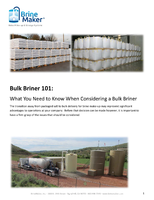Standard distinguishes harmful/non-harmful fines in concrete.
Press Release Summary:
ASTM WK36804, Test Method for Rapid Determination of the Methylene Blue Value for Fine Aggregate and Mineral Filler, will be used to qualify new material sources and for production quality control by personnel at aggregate producers, ready mix concrete producers, and asphalt concrete producers. Methylene blue test method contained in proposed standard does not involve titration and visual assessments typically associated with such testing and can be performed in field in about 10 min.
Original Press Release:
Proposed ASTM Concrete Standard to Aid in Determination of Harmful and Non-Harmful Fines in Concrete Aggregate
W. CONSHOHOCKEN, Pa., -Research and field experience have shown that fines free of clay and other harmful materials can be non-detrimental, and even beneficial, for concrete properties. A proposed new ASTM International standard will be used to distinguish between harmful and non-harmful fines in construction aggregate.
ASTM WK36804, Test Method for Rapid Determination of the Methylene Blue Value for Fine Aggregate and Mineral Filler, is being developed by Subcommittee C09.20 on Normal Weight Aggregates, part of ASTM International Committee C09 on Concrete and Concrete Aggregates.
According to Eric Koehler, research and development director, W.R. Grace and Co., once approved, ASTM WK36804 will be used to qualify new material sources and for production quality control by personnel at aggregate producers, ready mix concrete producers and asphalt concrete producers.
"The methylene blue test has been shown to be an effective indicator of the amount and type of clay present in aggregate and can therefore help to distinguish between harmful and beneficial fines," says Koehler, a C09.20 member.
Koehler says that the methylene blue test method contained in ASTM WK36804 does not involve the titration and visual assessments typically associated with such testing and can be performed in the field in about 10 minutes.
"Once it has been approved, the proposed standard will enable the use of a wider range of sands and limestone fillers in concrete, while also ensuring that these aggregates are of high quality," says Koehler. "This will prevent the waste of non-detrimental fines, which must currently be washed out of sand indiscriminately. This will result in more sustainable use of limited aggregate resources."
ASTM International welcomes participation in the development of its standards. For more information on becoming an ASTM member, visit http://www.astm.org/JOIN.
ASTM International is one of the largest international standards development and delivery systems in the world. ASTM International meets the World Trade Organization (WTO) principles for the development of international standards: coherence, consensus, development dimension, effectiveness, impartiality, openness, relevance and transparency. ASTM standards are accepted and used in research and development, product testing, quality systems and commercial transactions.
For more news in this sector, visit www.astm.org/sn-construction or follow us on Twitter @ASTMBuildings.
ASTM Committee C09 Next Meeting: Dec. 2-5, 2012, December committee week, Atlanta, Ga.
Technical Contact: Eric Koehler, W.R. Grace and Co., Cambridge, Mass., Phone: 617-957-8588; eric.koehler@grace.com
ASTM Staff Contact: Scott Orthey, Phone: 610-832-9730; sorthey@astm.org
ASTM PR Contact: Barbara Schindler, Phone: 610-832-9603; bschindl@astm.org




